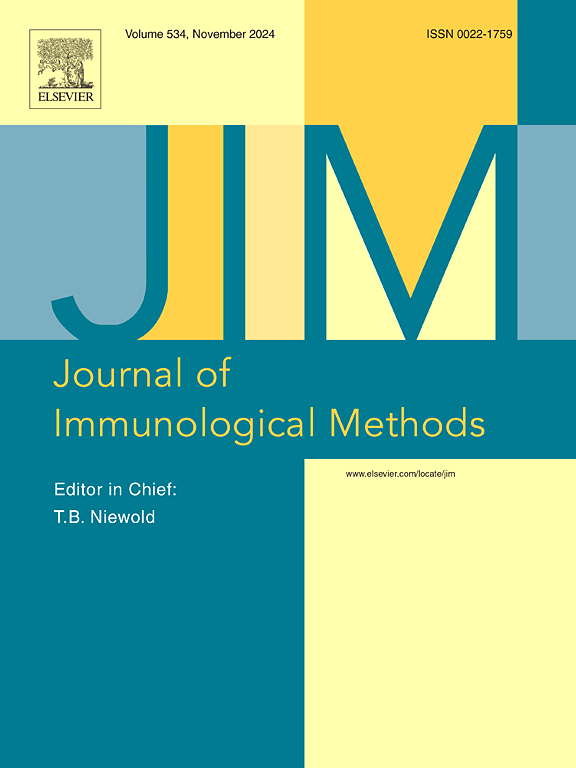ELISA protein detector (EPD): A Python-based ELISA tool for accurate low-level protein quantification
IF 1.6
4区 医学
Q4 BIOCHEMICAL RESEARCH METHODS
引用次数: 0
Abstract
The enzyme-linked immunosorbent assay (ELISA) is a cornerstone technique for quantifying protein secretion in biological research. However, the built-in software provided by ELISA plate readers often struggles to accurately detect low-concentration proteins, particularly in the sub-nanogram/mL range, due to limitations in calibration curve fitting. We developed the ELISA Protein Detector (EPD) to overcome these challenges. This open-source Python-based software employs advanced optimization algorithms to enhance curve fitting precision, particularly at low detection thresholds.” EPD features an intuitive user interface, requires minimal technical expertise, and supports robust cross-validation to enhance the reliability of ELISA data analysis. Tested on Windows systems, this tool provides a cost-effective and versatile solution for researchers, enabling accurate quantification of low-level protein concentrations and addressing the shortcomings of standard ELISA software in diverse biological and clinical applications.
ELISA蛋白检测仪(EPD):一种基于python的ELISA工具,用于准确的低水平蛋白定量。
酶联免疫吸附试验(ELISA)是生物学研究中定量蛋白质分泌的基础技术。然而,由于校准曲线拟合的限制,ELISA板阅读器提供的内置软件往往难以准确检测低浓度蛋白质,特别是在亚纳克/mL范围内。我们开发了ELISA蛋白检测器(EPD)来克服这些挑战。这款基于python的开源软件采用先进的优化算法来提高曲线拟合精度,特别是在低检测阈值的情况下。”EPD具有直观的用户界面,需要最少的技术专业知识,并支持强大的交叉验证,以提高ELISA数据分析的可靠性。该工具在Windows系统上进行测试,为研究人员提供了一种经济高效的通用解决方案,能够准确定量低水平蛋白质浓度,并解决了标准ELISA软件在各种生物和临床应用中的缺点。
本文章由计算机程序翻译,如有差异,请以英文原文为准。
求助全文
约1分钟内获得全文
求助全文
来源期刊
CiteScore
4.10
自引率
0.00%
发文量
120
审稿时长
3 months
期刊介绍:
The Journal of Immunological Methods is devoted to covering techniques for: (1) Quantitating and detecting antibodies and/or antigens. (2) Purifying immunoglobulins, lymphokines and other molecules of the immune system. (3) Isolating antigens and other substances important in immunological processes. (4) Labelling antigens and antibodies. (5) Localizing antigens and/or antibodies in tissues and cells. (6) Detecting, and fractionating immunocompetent cells. (7) Assaying for cellular immunity. (8) Documenting cell-cell interactions. (9) Initiating immunity and unresponsiveness. (10) Transplanting tissues. (11) Studying items closely related to immunity such as complement, reticuloendothelial system and others. (12) Molecular techniques for studying immune cells and their receptors. (13) Imaging of the immune system. (14) Methods for production or their fragments in eukaryotic and prokaryotic cells.
In addition the journal will publish articles on novel methods for analysing the organization, structure and expression of genes for immunologically important molecules such as immunoglobulins, T cell receptors and accessory molecules involved in antigen recognition, processing and presentation. Submitted full length manuscripts should describe new methods of broad applicability to immunology and not simply the application of an established method to a particular substance - although papers describing such applications may be considered for publication as a short Technical Note. Review articles will also be published by the Journal of Immunological Methods. In general these manuscripts are by solicitation however anyone interested in submitting a review can contact the Reviews Editor and provide an outline of the proposed review.

 求助内容:
求助内容: 应助结果提醒方式:
应助结果提醒方式:


